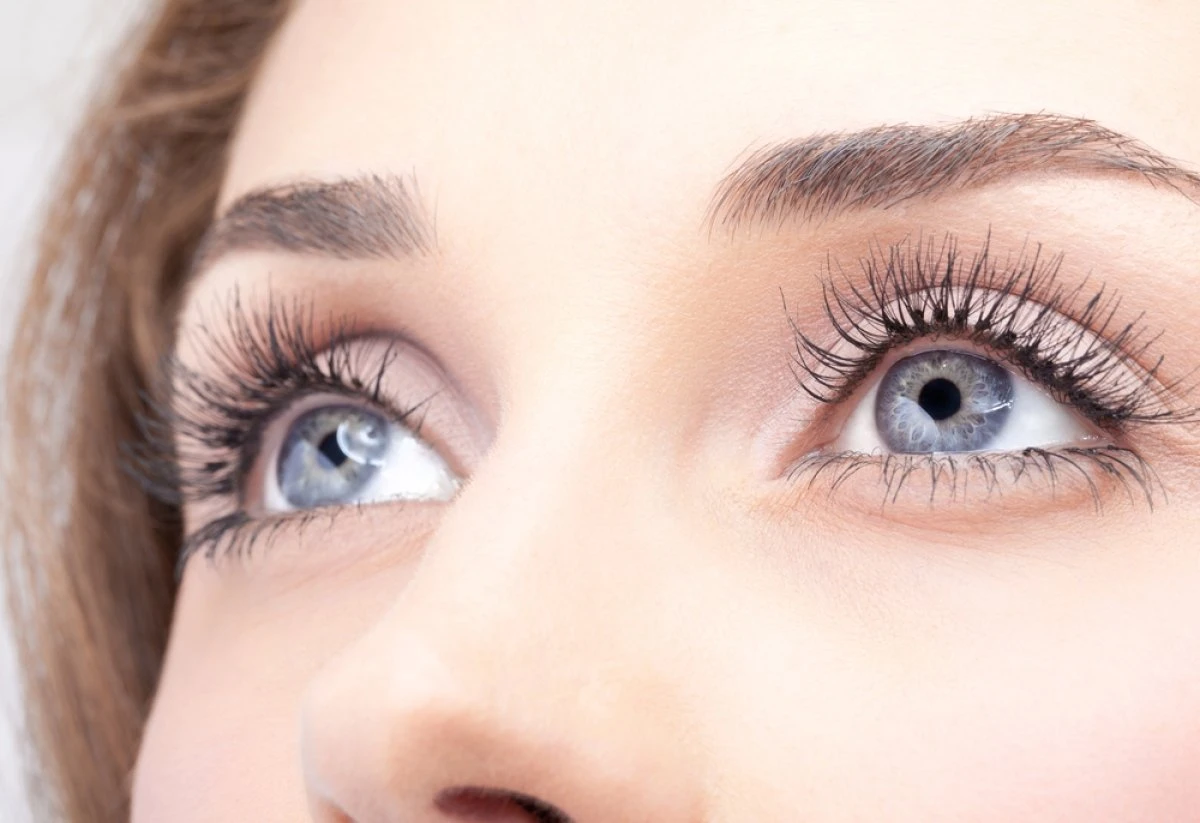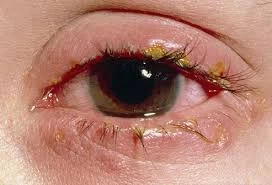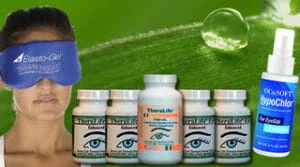To effectively address crusty eyes, consider TheraLife’s unique oral eye treatment. As the only company offering this innovative approach, TheraLife provides comprehensive relief and promotes eye health from within. Their products are designed to tackle the root causes of eye discomfort, ensuring long-term benefits and improved well-being. If symptoms persist or worsen, it’s essential to consult a healthcare provider to explore further underlying causes and protect your eye health.
Get Rid Of Crusty Eyes – Treat Your Dry Eyes With TheraLife
Add To Cart
Key Takeaways
- Apply a clean, warm compress to closed eyes for 5-10 minutes, repeating 2-3 times daily, to loosen crusts and relieve irritation.
- Practice gentle eyelid hygiene by wiping the lash line with a moist cotton pad or gauze to remove debris and prevent further buildup.
- Use sterile, preservative-free artificial tears to lubricate the eyes and flush out irritants or allergens.
- Try cooled chamomile or green tea compresses for natural soothing and mild antibacterial effects, ensuring teas are fresh and uncontaminated.
- Avoid rubbing your eyes, and regularly clean bed linens and your environment to minimize exposure to dust, pollen, and pet dander.
Understanding the Causes of Crusty Eyes
Although crusty eyes are common, they can develop for several reasons. You might notice sticky or flaky debris around your eyelids when you wake up.
Allergies symptoms, such as itching, redness, and watering, often contribute to this problem. Environmental factors—like pollen, dust, or pet dander—can irritate your eyes, leading to increased mucus or discharge.
Sometimes, crusty eyes signal an underlying condition, such as blepharitis or conjunctivitis. These conditions may result from bacterial or viral infections, or even clogged oil glands.
If you frequently experience crusty eyes, it’s important to reflect on your recent exposures and any accompanying symptoms. Persistent or severe discharge may indicate more serious conditions and require professional evaluation. Persistent or severe symptoms might require medical attention to identify the underlying cause and guide effective treatment.
Always consult a healthcare professional if you’re unsure.
Gentle Warm Compress Application
One simple and widely recommended approach for relieving crusty eyes involves applying a gentle warm compress. When you place a clean, warm, damp cloth over your closed eyelids, the warmth may help soften crusts and encourage eyelid relaxation. This method can also support natural tear flow and help loosen any debris without causing irritation. It’s important to verify the compress is not too hot, as excessive heat could harm sensitive eyelid skin. Regular use of a warm compress can also unclog meibomian glands, which is beneficial for overall eye health. Here’s a quick reference guide:
| Step | Details |
|---|---|
| Wash hands | Use soap and water before touching your eyes. |
| Prepare cloth | Moisten with warm (not hot) water. |
| Apply compress | Place over closed eyes for 5-10 minutes. |
| Repeat | 2-3 times daily, as needed. |
| Use fresh cloth | Prevents potential infection or contamination. |
Proper Eyelid Hygiene Techniques
After using a warm compress to loosen debris, taking care of your eyelids with proper hygiene can help manage and prevent crusty buildup.
Gently cleanse your eyelids by moistening a clean cotton pad or gauze with warm water. You may use a mild, preservative-free cleanser specifically formulated for eyelid cleansing if recommended by an eye care professional.
Carefully wipe along the lash line, moving from the inner to the outer corner, avoiding excessive rubbing. Rinse with clean water and pat dry.
Consistent eyelid cleansing is important because eye crust formation is a natural process that occurs due to a lack of blinking during sleep. Practicing this routine once or twice daily may reduce debris and bacteria that contribute to irritation. Consistent eyelid cleansing is one of the most effective preventive measures you can take to help minimize recurrence of crusty eyes and support overall eye comfort.
Natural Solutions Using Herbal Teas
You might consider herbal teas like chamomile or green tea for mild crusty eyes. Some small studies suggest chamomile tea compresses may help soothe irritation, while green tea is thought to offer mild antibacterial effects. It’s important to use cooled, freshly brewed teas and consult your healthcare provider before trying these remedies. Eye discharge, also known as “sleep,” consists of mucus and oil accumulation that provides essential moisture and protects the eyes by preventing debris from entering.
Chamomile Tea Compress Benefits
Several herbal remedies, including chamomile tea compresses, are often promoted as natural solutions for crusty eyes. Chamomile is known for its soothing and anti-inflammatory properties, which may help ease irritation around your eyelids. Some people believe the chamomile properties in tea can provide comfort when applied as a warm compress, potentially reducing swelling or discomfort from mild eye issues. However, scientific evidence supporting these tea benefits for eye health is limited. It’s important to use only properly prepared, cooled chamomile tea bags to avoid burns or contamination. If you have allergies to plants in the daisy family, you should avoid chamomile. Additionally, dry eye syndrome can contribute to crusty eyes, so it’s crucial to address underlying causes for more effective relief.
Green Tea Antibacterial Properties
Green tea, another popular herbal remedy, often comes up in discussions about natural solutions for crusty eyes. You may have heard that green tea has antibacterial properties, thanks to its polyphenols and catechins. Some laboratory studies suggest these compounds might inhibit certain bacteria. However, current research doesn’t directly support the use of green tea to treat eye infections or improve eye health when applied topically. If you’re considering using a cooled green tea bag as a compress, be cautious—there’s no clinical evidence confirming its safety or effectiveness for crusty eyes. It’s essential not to substitute green tea compresses for prescribed treatments. Instead, consult your eye care professional for proper guidance on eye health, especially if you experience persistent symptoms or discomfort. For those looking for natural help for dry eyes, products like TheraLife® Eye may offer a more reliable solution.
Hydration and Dietary Considerations
While staying hydrated and maintaining a balanced diet support overall eye health, there’s limited direct evidence that increasing water intake or modifying your diet will specifically reduce crusty eyes.
However, you might still benefit from general hydration tips, such as drinking water regularly throughout the day and limiting caffeine and alcohol, which can contribute to dehydration. Proper hydration helps maintain tear production, which in turn may prevent eye dryness that can lead to discomfort.
When considering dietary changes, focus on a balanced intake of vitamins A, C, and E, as well as omega-3 fatty acids, all of which promote healthy eyes. Omega-3 fish oil can improve oil film production by the meibomian glands, which helps alleviate dry eye symptoms. Foods like leafy greens, fish, nuts, and citrus fruits offer valuable nutrients. While these measures may not cure crusty eyes, they contribute to your overall eye health.
Over-the-Counter Remedies to Consider
Although crusty eyes often resolve with basic hygiene, some over-the-counter (OTC) options may help ease discomfort and manage mild symptoms. You might consider these over-the-counter options as medication alternatives before seeking prescription treatments.
Here are three evidence-based OTC remedies to discuss with your pharmacist or healthcare provider:
- Artificial tears: These lubricate your eyes and help flush out debris, easing irritation and dryness.
- Sterile eyelid wipes: Designed for gentle cleansing, they can remove crusts and reduce the risk of further irritation or infection.
- Lubricating eye ointments: These provide longer-lasting moisture, especially helpful overnight if you wake with crusty eyes.
Eye discharge can vary in color and texture, and abnormal discharge may indicate an infection, especially if accompanied by pain or vision changes. Always read labels carefully and consult a healthcare professional if symptoms persist or worsen, as persistent eye issues may require further medical evaluation.
Avoiding Common Irritants
Because certain substances can worsen eye irritation or contribute to crust formation, it’s important to identify and limit your exposure to common irritants. You may find that dust, pollen, pet dander, or smoke act as allergy triggers, increasing your risk of crusty eyes. Keeping your environment clean, washing your hands frequently, and avoiding rubbing your eyes can help reduce contact with these irritants. If you’re using eye drops, always choose preservative-free options and avoid products that may cause further irritation. Consider the following strategies:
| Common Irritant | Suggested Action |
|---|---|
| Pollen, Dust, Dander | Use air purifiers, clean linens |
| Smoke | Avoid exposure, ventilate rooms |
| Harsh Chemicals | Wear protective eyewear |
Additionally, immune inflammatory mechanisms play a significant role in eye conditions like blepharitis and dry eye disease, highlighting the importance of addressing inflammation for eye health. These steps may help you minimize crusty eye symptoms and support eye health.
When to Seek Medical Attention
If your eyes remain persistently crusty despite home care, or you notice symptoms such as significant pain, vision changes, intense redness, or discharge that’s yellow or green, it’s important to consult a healthcare professional.
Careful symptom identification is essential, as these signs may indicate an underlying infection or a more serious eye condition that requires prompt evaluation.
You should seek medical attention if you experience:
- Persistent or worsening symptoms after several days of home treatment.
- Any vision changes, such as blurriness, double vision, or difficulty seeing.
- Severe pain, swelling, or colored discharge from your eyes.
A medical provider can recommend appropriate treatment options, which might include prescription medications or other interventions. Early intervention can help prevent potential complications and support ideal eye health.
Get Rid Of Crusty Eyes – Treat Your Dry Eyes With TheraLife
Add To Cart
Frequently Asked Questions
Can Crusty Eyes Be Contagious to Others in My Household?
Yes, crusty eyes can be contagious if they’re caused by an eye infection like conjunctivitis.
You should practice good hygiene practices, such as washing your hands frequently, avoiding rubbing your eyes, and not sharing towels or pillowcases.
While not every case is infectious, it’s wise to stay cautious until you know the cause.
If symptoms persist or worsen, you should consult a healthcare professional to determine the best course of action.
Are Certain Age Groups More Prone to Crusty Eyes?
Imagine two overlapping circles—one for elderly individuals, another for children sensitivity.
You might wonder if certain age groups really are more prone to crusty eyes. Medical evidence suggests children, due to their developing immune systems, and elderly individuals, due to decreased tear production or chronic conditions, can both experience increased risk.
However, it’s important to note that anyone can develop crusty eyes depending on exposure, hygiene, and underlying health factors.
Will Digital Screen Use Worsen Crusty Eyes Symptoms?
If you spend extended hours on digital devices, you may notice digital eye strain, which can indirectly worsen crusty eyes symptoms.
Increased screen time impact may reduce your blink rate, leading to dryness and irritation.
While digital screens don’t directly cause crusty eyes, they can exacerbate underlying conditions like blepharitis or dry eye syndrome.
It’s advisable to take regular breaks and consult an eye care professional if symptoms persist or worsen.
Can Pets Contribute to Developing Crusty Eyes?
When you let the cat out of the bag, you might realize pets can sometimes contribute to developing crusty eyes.
If you have pet allergies, exposure to dander could lead to eye irritation and discharge. Additionally, pets may carry bacteria or viruses, increasing your risk of eye infections.
It’s important to keep your hands clean and avoid touching your eyes after handling pets, especially if you’re prone to allergies or infections.
Is It Safe to Wear Contact Lenses With Crusty Eyes?
If you have crusty eyes, you shouldn’t wear contact lenses until your symptoms resolve.
Crustiness could signal an underlying infection or inflammation, and wearing lenses may worsen irritation or increase your risk of complications.
Good contact lens hygiene is essential for eye infection prevention, so always follow proper cleaning protocols.
If symptoms persist or worsen, consult an eye care professional before resuming lens use to protect your eyes’ health and safety.
Get Rid Of Crusty Eyes – Treat Your Dry Eyes With TheraLife
Add To Cart
Conclusion
Imagine waking up to clear, comfortable eyes instead of gritty, crusty lids. At TheraLife, we provide a unique advantage with our oral eye treatment care, the only solution of its kind available in the market. Our products are designed to benefit those suffering from conditions like blepharitis, dry eyes, and more, by addressing the root causes internally, providing comprehensive and lasting relief.
While gentle warm compresses, mindful eyelid hygiene, and a soothing cup of herbal tea can support your eye health at home, TheraLife’s evidence-based solutions go a step further. Our oral treatments work from within to restore and maintain your eye health, offering unmatched relief and protection for your vision.
Remember, it’s important to stay hydrated, choose nourishing foods, and avoid irritants. However, if symptoms worsen or persist, don’t hesitate to contact your healthcare provider—your vision is worth protecting. Trust TheraLife to deliver effective, science-backed care for your eyes.





